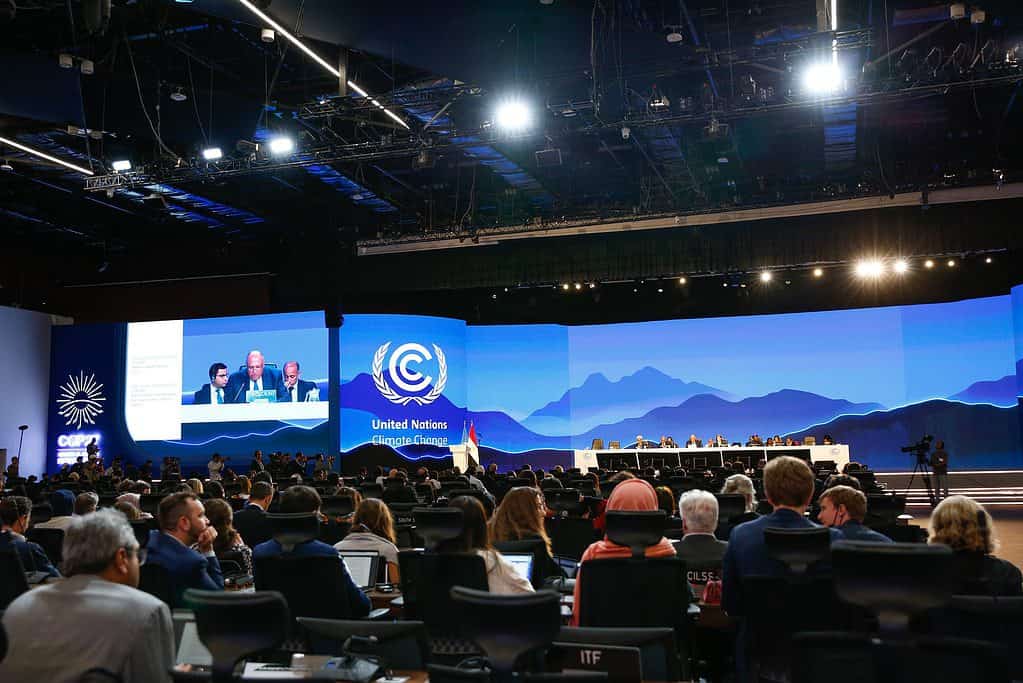Once a year, negotiators from about 200 countries gather for two weeks to find ways to tackle the climate crisis. This year’s meeting has just ended, and its main achievement was agreeing to set up a fund that would help vulnerable and poor countries cope with climate disasters. But it’s not even clear how this is supposed to work.

The decision to have payments for climate damage marks a breakthrough in the history of United Nations climate negotiations. For over three decades, developing countries have insisted on the need for the fund, asking developed nations to compensate them for the costs of the many and growing effects of the climate crisis. It makes sense because developed countries became developed by burning fossil fuels — and now everyone has to pay the bill.
The effects that can be compensated for include droughts, heat waves, storms, and sea level rise, among many others. And while people can adapt to some of the changes, in many cases, adaptation is impossible. The social and financial impacts of climate change that can’t be avoided are known as “loss and damage,” which is the name of the new fund just created.
Loss and damage
Climate loss and damage can be economic or non-economic. The first group includes financial losses experienced by businesses, such as drought reducing yield in crops, and affecting farmers. It can also mean the loss of infrastructure and property. The second group refers to cultural traditions, biodiversity, and ecosystem services, for example.
The US and other industrialized, developed countries had long rejected the idea, claiming it would hold them legally responsible for the emissions driving climate change. The new agreement signed at the climate summit COP27 says this can’t happen. However, it took over two weeks of intense discussions to get there.
The new climate fund was close to not happening due to disputes at COP27 between developed and developing countries, which fought hard to include the issue on the formal agenda of the summit.
“We had 30 years of patience. The day has arrived. It is done. A new fund for loss and damange. This is a unique moment, a victory for all citizens of the world,” Alpha Kaloga, the lead negotiator for the African group of countries at COP27, wrote on Twitter when the fund was finally approved at the end of the summit in Egypt.
As the summit was coming to an end, the EU accepted the idea of a loss and damage fund, but it insisted it should be focused on the most vulnerable nations, and that the funding should come from diverse options and not just direct payments. That left the US as the last holdout. Finally, American officials agreed, unlocking the negotiations.
Another key problem for the negotiations was China.
China is the world’s biggest polluter currently, and it’s on track to surpass the US in terms of all-time emissions — but at climate negotiations, China still calls itself a developing country.
The US and the EU want assurances that China will contribute to the fund and that it won’t be eligible to get money. The UN rules currently classify China as a developing country, which would make it eligible for the fund, while ironically being the world’s largest emitter of greenhouse gases.
But this is just one problem, and there are plenty of others — and details are scarce.
According to the agreement, the fund will get contributions from developed countries and other private and public sources, such as financial institutions. It will be largely aimed at the most vulnerable nations, but there would be some room for middle-income countries severely affected by climate disasters. But it’s still all up in the air and will allegedly be decided in time by a committee.
There’s also no guarantee that the rich countries will contribute any money to the new fund, as the deal is not binding. Back in 2009, they agreed to mobilize $100 billion per year in climate finance by 2020 to help developing countries reduce their emissions and adapt to the climate crisis. They didn’t meet that goal and are still falling short by tens of billions of dollars.
It will likely take at least a year, until the next climate conference in the United Arab Emirates in December 2023, to sort out the many pending details on how the fund can work. There’s little money available so far, as few countries have made pledges of cash for loss and damage. While its creation it’s good news, there’s still a long way to go.



